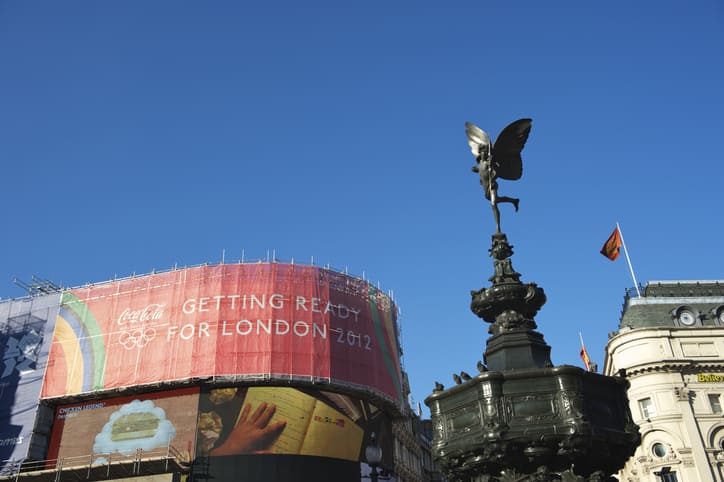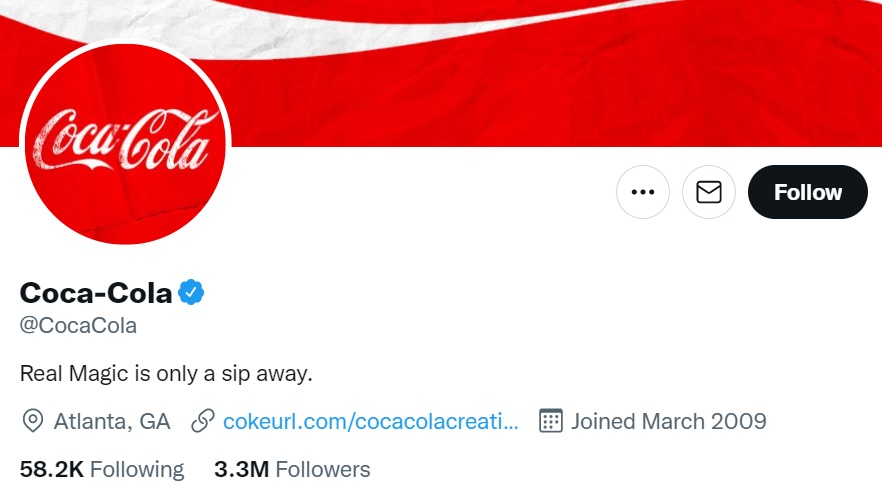Learning From Coca-Cola Digital Marketing Strategy
What began as a soda fountain drink for five cents per glass, sells at the rate of 19,400 beverages per second, today. The 135-year-old ad slogan ‘Delicious and Refreshing’ still continues as a concept in Coca-Cola’s underlying marketing theme.
Today you will know how a brand can have a lasting positive impression on a global level with Coca-Cola’s digital marketing strategy.
This Coca-Cola case study includes the following.
Coca-Cola Digital Marketing Strategy
Know about the iconic company that consumers of every demographic associate with. And, how it is not reinventing itself in today’s competitive online market scenario. Instead, it is adapting to broader modern-day concerns – health and environment.
A brief history of Coca-Cola
The Coca-Cola Company has one of the largest market shares in the world. This dominant carbonated soft drink (CSD) company started in 1886 in Atlanta in the United States.
It took around a decade to gain success in the country. Marketer Asa G Candler made it available to every state and territory in the US by 1895.
A year after the First World War ended, Coca-Cola began setting up bottling plants across the globe.
How Coca-Cola Sustains its Brand Presence
Consistent Brand Image
Coca-Cola is one brand that has shown consistency throughout the two centuries. Except for the change of the initial letter in Cola (K to C), it has the same logo and bottle shape.
The brand also has used the same colour psychology since the early 20th century. Red invokes impulse buys and the swirling letters, passion. Studies have shown that 94% of people worldwide instantly recognise Coke’s logo in red and white.
Let’s look into historical trivia about how it used its colours on ads in the mid 20th century.
The beverage became a household name and changed the perception of Santa Claus since 1931. Earlier, Santa Claus was perceived to be a tall-like man wearing a tan coat.
Between the years 1931 and 1964, Coke ads appeared in The New Yorker and other public magazines. These oil-painted ads showed Santa delivering gifts and reading letters with a Coke bottle in his hand. The red and white colours in the dress symbolised the colour of the brand.
Innovative Pricing
Up until 1959, a Coke bottle was sold at a price of 5 cents. It had been the same price when it came out a century before. It changed the price only when the competitors sold their beverages at a higher price.
But the company has ensured affordability throughout the decades. It uses three different pricing strategies
- Price Skimming for Market Positioning
It increases the price when it enters a new market that has more demand for the product. After earning profits, it gradually reduces the cost.
- Selling at the Standard Market Price
The company uses this model to compete with competitors.
- Attract Sales with Less Price
This is also another pricing strategy when the company comes to a new market and wants to increase sales numbers.
Product and Distribution
Today it is present in more than 200 countries and territories. It also has 200 companies under its belt and they are sold under different categories
- Coffee & Tea – Costa Coffee, Georgia, etc
- Juices, Dairy & Plant-based – Minute Maid, AdeS, etc
- Sparkling Soft Drinks – Coca-Cola, Diet Coke, Fanta, Sprite, etc
- Waters & Hydration – Aquarius, Powerade, etc
Promotion At Every Level
Coca-Cola taps into the lifestyles of different locations it operates. By doing that, it targets a much wider demographic.
Coca-Cola’s marketing campaigns reach the hearts of consumers. It sponsors campaigns for major global events such as the Olympic Games and during festive seasons of each geographic region.
Coca-Cola has been sponsoring the Olympic Games since 1928. Below is a snapshot of the advertisement at Piccadilly Circus for the 2012 Olympics in London.
Four-Point Digital Transformation Plan
Part of the brand’s continuing success is personalisation. Needless to mention, Coca-Cola spends a lot on marketing to sell an ‘experience’ than a ‘product’.
Between 2014 and 2019, $4 billion was the average marketing spend of each year. In 2020, it went down to $2.77 billion due to the pandemic and restaurants going out of business. These figures are from Statista.
Coming to the company’s four-point digital transformation plan, it is looking at the health-conscious younger generation and improving processes internally.
Today most of the Gen Z and millennial population prefer low-fructose drinks according to the company.
The four focus areas the company is going for are
- Operational Transformation – Using artificial intelligence to remove mundane tasks and save time for the internal teams
- Cultural Transformation – Offering a more personalised experience through new digital technologies. According to Coca-Cola’s VP of digital transformation, Mariano Bosaz, the company wants to go “beyond storytelling, beyond the 30-second or three-second media”.
- Business Transformation – To ensure that its business strategy is not affected by other competitors
- Experience Transformation – Understanding the consumer at a local level and social listening to improve customer experience
Reusable Packaging
This is a recent initiative from The Coca-Cola Company. It is planning to make packaging recyclable by 2030. With it, the company plans to promote a low carbon footprint.
Coca-Cola’s Digital Channels
Coca-Cola is on all the relevant social media channels. On Twitter, it has 3.3 million followers, on Instagram – above 2.7 million and 90 million likes on its Facebook page.
It interacts directly with fans which bring higher engagement rates. It also leverages user-generated content.
Most of its direct engagement tactics focus on the younger target audience. Hashtags such as VerdaderoAmigo celebrated loyalty, friendship and kindness.
Let’s look at its #shareacoke campaign.
The Share a Coke campaign is one of the most popular social media marketing strategies of the brand. The company changed the traditional wrapper on the bottle and put names of popular people of the region. By buying a Coke bottle, the consumer could feel connected to the personality.
This ad campaign garnered 330 million impressions on Twitter.
- Content Marketing Strategy
Coca-Cola follows a 70/20/10 rule for its content marketing strategy. That is, it divides its content investment into high, medium and low risks.
70 implies low risk, 20 is medium risk and 10 is high risk.
The content that falls under low risk is created for a large target audience. It means that content that this type of content should be about brand positioning and building a community of loyal followers.
Medium risk content implies the content should cater to a new audience. This kind of content planning arises from low-risk content. But it can be more expensive as an investment.
High-risk content is experimental in nature. The purpose is to find what will work in the future. And by tracking the success and increased demand of that type of content, it can become the next low-risk investment.
Best-suited Business Strategy courses for you
Learn Business Strategy with these high-rated online courses
Parting Thoughts
As you can see, Coca Cola applies the 4Ps of marketing for branding. Its digital marketing strategy is a mix of leveraging social media channels and smart content distribution. Do check out digital marketing courses if you want to apply the best marketing strategies for your brand.
Recently completed any professional course/certification from the market? Tell us what you liked or disliked in the course for more curated content.
Click here to submit its review with Shiksha Online.

Aquib is a seasoned wordsmith, having penned countless blogs for Indian and international brands. These days, he's all about digital marketing and core management subjects - not to mention his unwavering commitment ... Read Full Bio






